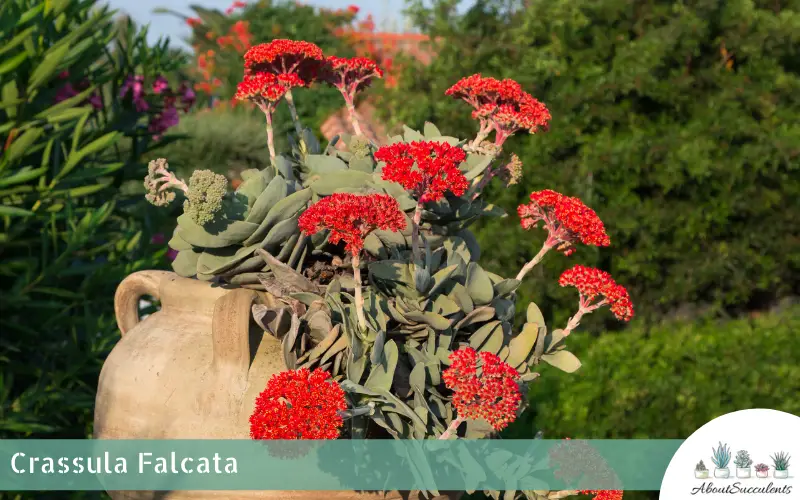
Crassula falcata is a very distinctive-looking succulent that has overlapping pairs of greyish-green colored, sickle-shaped leaves that radiate outward and give it the appearance of propellers. This is the reason Crassula falcate is also called Propeller Plant or Airplane Plant.
The succulent is also given the name Scarlet Paintbrush because it produces a dense cluster of beautiful flowers in the summer or fall season. The flowers are colored bright orange-red or sometimes scarlet-red, measure 3.14-inches to 4.72-inches wide (8cm to 12cm), and gives off a mild, almost indiscernible scent.
Crassula falcate can grow up to 12-inches to 24-inches (30.5cm to 61cm) tall and 12-inches (30.5cm) wide. It is part of the Crassulaceae family and is native to South Africa.
General Information:
Also known as: Propeller Plant, Airplane Plant, Scarlet Paintbrush.
Plant Family: Crassulaceae
Origin: South Africa
Height: 112-inches to 24-inches (30.5cm to 61cm) tall
Exposure: Direct exposure to sunlight up to 3 hours
Water Needs: Frequent watering schedule during the summer months; very little to no watering in the winter or cold season.
Soil Type: Cactus soil or a potting soil mix composed of pumice and bird sand.
Soil pH: Acidic (6.0 pH)
How to Grow and Care for Crassula Falcata
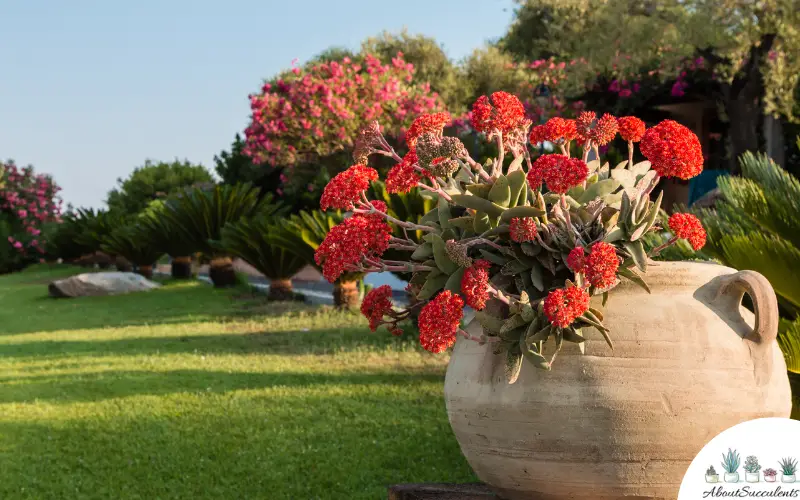
Crassula Falcata is a very easy succulent to plant and grow. It is not a cold-hardy plant. If you live in a region where the temperature can drop below 20° F ( -6.7° C), it would be a good idea to place Propeller Plant in a container and brought indoors.
1. Sunlight
Crassula falcata needs 3 hours of sunlight per day in order to thrive. When grown indoors, place Propeller Plant near a window that receives sunlight. If you want to move the succulent to the outdoors in the summer, do a gradual exposure to the sun.
Start out by placing Crassula falcate under a lightly-shaded area then slowly expose the plant to the sun for a few hours at a time. If exposed to the sun right away, the plant can get scorched.
2. Watering
Crassula falcata should have a regular watering schedule during the summer. Propeller Plant is susceptible to the dangers of overwatering. It is recommended to give Crassula falcata water only when the soil is dry to the touch.
During winter, the soil tends to retain moisture longer. The watering schedule for Crassula falcata must be greatly reduced.
When the succulent is in its active growth stage which is around the 4th to 8th week, feed it with standard liquid fertilizer or cacti fertilizer that is diluted with water to lower its potency.
3. Pot and Soil
Crassula falcata is best planted in a pot that has good drainage to prevent moisture from building up. Cactus soil or a regular potting soil mix combined with pumice and bird sand will drain it of excess moisture.
It is recommended to re-pot Crassula falcata during spring when the succulent has outgrown its pot. Make sure the soil is dry before re-potting. Gently remove the pot and shake away excess soil from the roots of Propeller Plant.
Look for rotting roots and signs of fungal infection. Remove the rotting roots and treat the infection with a fungicide.
How to Propagate Crassula Falcata
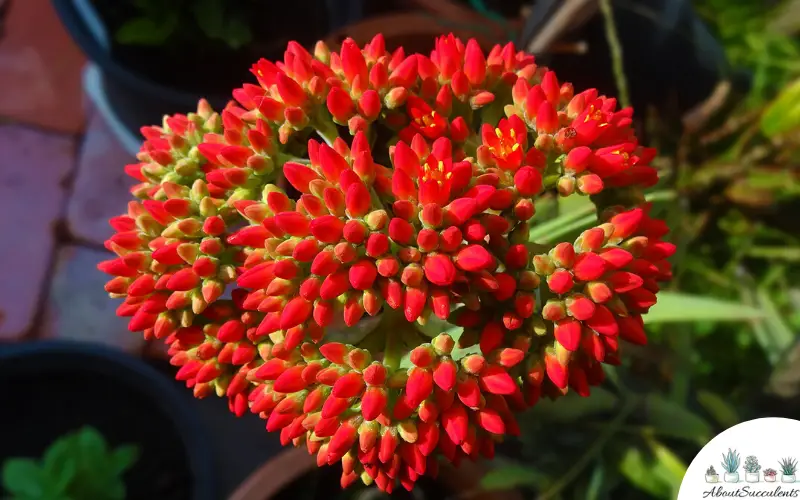
If you can’t get enough of Crassula falcata, the succulent can be propagated through 4 methods: Leaves, cuttings, offsets, and side shoots.
1. Leaves
Step 1: Use a clean pull to gently twist the leaf from the stem of Propeller Plant.
Step 2: Place the leaf in a shaded area for a few days. If the leaf has developed hard calluses, it is ready to be planted.
Step 3: Place the callused leaf of the Crassula falcata succulent on well-draining soil. The roots will find their way into the soil.
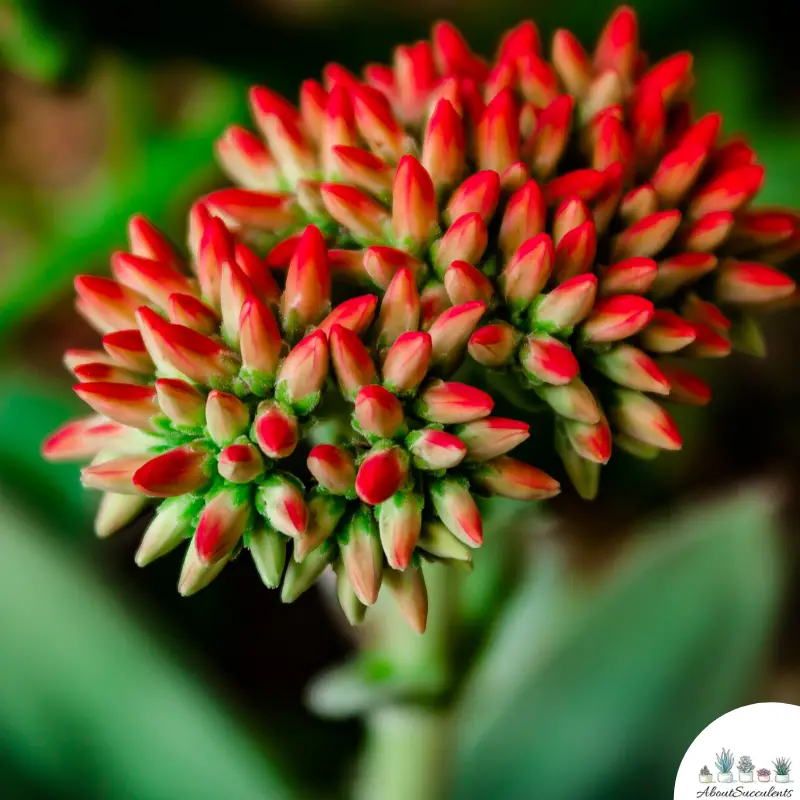
2. Cuttings
Step 1: Use a sharp and sterilized knife to cut the stem from the base of Crassula falcata.
Step 2: Wait a few days for the stem to develop calluses. This can be done by placing the stem in a shaded area.
Step 3: Insert the cut part of the stem into well-draining soil.
Step 4: After 1 to 2 days, water the plant. From there, give the plant water only when the soil is dry to the touch.
3. Offsets
Step 1: Cut the offsets from the base of the main plant. Make sure the knife or garden shears have been sterilized to avoid infection.
Step 2: Place the offsets in a shaded area so they can develop calluses. This will usually take 1 to 2 days.
Step 3: Place the offsets in well-draining soil.
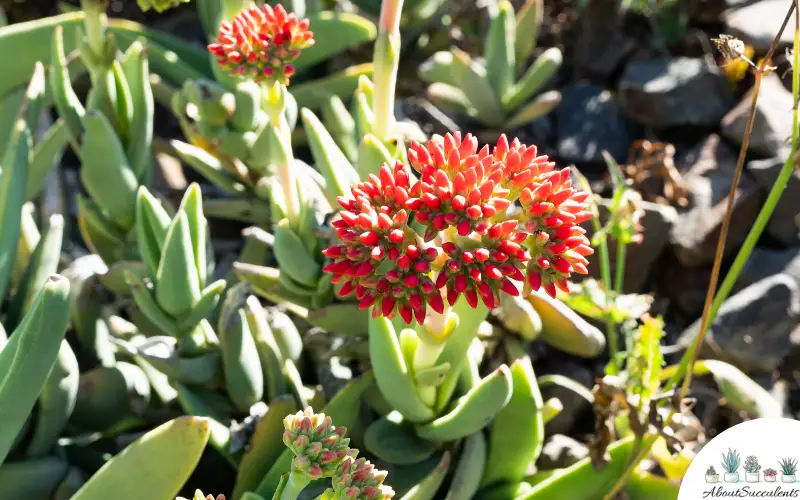
4. Side Shoots
Step 1: Side shoots can be found near the base of Crassula falcata. Remove the side shoots with a knife or garden shears.
Step 2: Place the side shoots in separate pots filled with well-draining soil.
Step 3: Cover the pots with plastic.
Step 4: Remove the plastic from the pots when the side shoots have taken root.
Frequently Asked Questions
Is Crassula Falcata Toxic for Cats and Dogs?
A search inquiry performed on Crassula falcata on the website of the American Society for the Prevention of Cruelty to Animals (ASPCA) yielded no results for the succulent which means Propeller Plant is safe for cats and dogs.
Why is my Crassula Falcata Succulent Dying?
Overwatering and pest infestation are the 2 likely causes of your Crassula falcata succulent dying.
1. Overwatering
Water is the plant’s source of life but too much of it can lead to its death. The Crassula falcata stores water in its leaves. It is left to stand on soil that stays moist for a long time, the plant’s roots will start to rot.
2. Pest Infestation
Mealybugs and spider mites are the pests that most attracted to Crassula falcata. The mealybugs can easily be removed with cotton dipped in denatured alcohol.
Spider mites flourish during the dry season. Once spider mites invade your plant, they are nearly impossible to get rid of. The key is to treat the infestation at its early stages with insecticide.
If your Crassula falcata has been infested with pests, move it to another location or else the pests will move to the other plants.
Does Crassula Falcata Produce Flowers?
Yes, Crassula falcata produces flowers and these are the main attraction of the succulent. The plant blooms in the summer or fall season.
The flowers grow out of the center of Propeller Plant can be seen at the end of its long stems. The scent that emanates from Crassula falcata is mild but refreshing. It is best described as having the scent of cinnamon.
Last Updated on June 12, 2022 by Sofia Lara